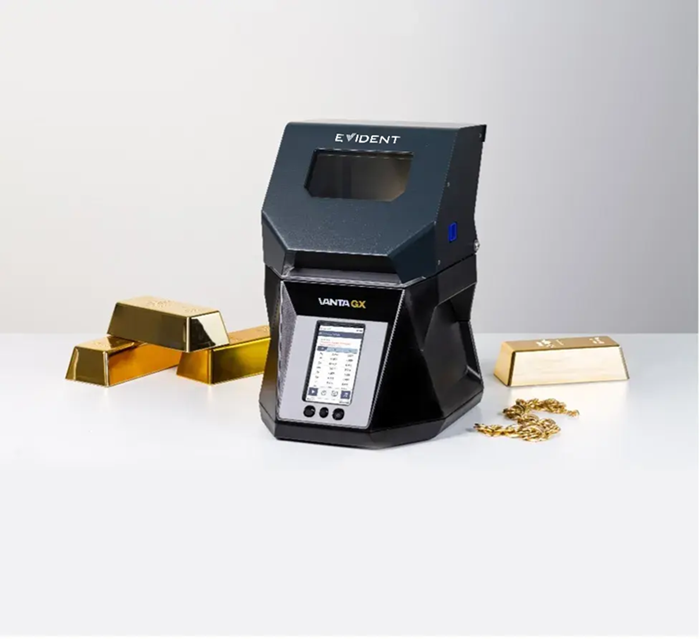Bullion dealers and pawn shop owners require appropriate tools to ensure they are providing their customers with pure gold, silver, and other precious metals.
Several analytical methods are used to test gold and other precious metals’ purity and authenticity, including acid scratch tests, conductivity measurement, and X-ray fluorescence (XRF) testing.
This article outlines these gold testing methods, offering a useful comparison to ensure that profits can be maximized by applying the most appropriate techniques.
Acid Scratch Tests
Acid scratch tests involve applying a small drop of acid to a small area of metal and observing the resulting reaction.
A range of acids is used for testing, depending on the metal in question, such as nitric acid for silver and hydrochloric acid for gold. The acid will not have a noticeable effect on the metal’s surface if it is genuine, but it will react if it is impure or an alloy, leaving discoloration or a scratch on its surface.
This method is rapid and straightforward, but its results can be subjective. The accuracy of acid scratch tests is also considered to be low. For these reasons, acid scratch testing cannot be considered a quantitative method.
Conductivity Measurement
Conductivity measurement involves using an electronic device to measure a metal’s electrical conductivity. Different metals have distinct conductivity levels, so this method can be used to identify the type of metal present.
However, this method can be inaccurate because some alloys and mixed metals exhibit similar conductivity levels. It is also important to note that a sample’s temperature can impact the test result.
XRF Testing
XRF testing is a comprehensive and accurate method for determining the content and purity of precious metals. X-rays are emitted into a metal via an XRF analyzer, which measures the energy released by the excited electrons to determine the sample’s composition.
Results from this quick and easy test are provided in seconds, and XRF analyzers are widely regarded as the most reliable tools for metal testing.
The tables below compare results (percentage of elements in the sample tested) from the Vanta™ GX PIN model XRF-based precious metal analyzer against certified reference standards for gold jewelry alloy, confidently demonstrating XRF’s accuracy and precision.
Vanta™ GX PIN Model (15-Second Test Time, %)
Source: Evident Corporation
| Element |
Test 1 |
Test 2 |
Test 3 |
Test 4 |
Test 5 |
Vanta GX
Average (%) |
FLUXANA 0732-16
Certified Value (%) |
| Gold (Au) |
33.50 |
33.40 |
33.39 |
33.38 |
33.42 |
33.42 |
33.33 |
| Silver (Ag) |
58.30 |
58.41 |
58.36 |
58.29 |
58.41 |
58.36 |
58.61 |
| Copper (Cu) |
8.2 |
8.2 |
8.25 |
8.32 |
8.17 |
8.23 |
8.06 |
It is important to note that XRF is a nondestructive method, making it ideal for precious metal analysis. Unlike acid scratch tests, which may leave a mark on the sample, XRF testing does not harm the metal being evaluated.
XRF analyzers are available in rugged handheld versions, which are flexible enough for testing metals in the field, and powerful benchtop versions ideally suited to the showroom environment.
A Simpler Way to Test Gold, Silver, and Jewelry
The Vanta™ GX precious metal analyzer from Evident Scientific is an easy-to-use and cost-effective benchtop XRF analyzer. This powerful and flexible instrument is ideally suited to determining the purity and percentage of a range of precious metals, including silver, gold, platinum, and palladium, all at the push of a button.
The Vanta™ GX provides comprehensive composition results, allowing its users to accurately price items. It can detect up to 27 chemical elements, including less valuable and hazardous elements like cadmium or lead.
These actionable test results are complemented by a useful gold plating alert, making it easy to spot fake items.

Vanta GX precious metal analyzer. Image Credit: Evident Corporation
An XRF-based precious metal analyzer allows its users to effortlessly verify valuable metals, assuring customers that they are purchasing a genuine product and allowing traders to confidently stand behind the purity of their products.
Having an analyzer on hand also allows customers to test their own precious metals on the spot—an especially useful feature for items purchased from other mints or dealers.
XRF is a key tool for establishing trust and credibility when used effectively. For instance, an alloy item believed to be pure gold may be mistakenly priced, potentially losing money in the transaction.
Should an item believed to be a low-grade metal be a valuable precious metal, there is the risk that a buyer may significantly underpay for the item, causing the trader to miss out on a profitable investment.
Bullion dealers and their customers can leverage the power and flexibility of the Vanta™ GX precious metal analyzer to determine the jewelry’s composition confidently, differentiate gold-plated items from pure gold items, and make informed and ultimately profitable purchasing decisions.
Acknowledgments
Produced from materials originally authored by Vladimir Vermus from Evident Scientific.

This information has been sourced, reviewed and adapted from materials provided by Evident Corporation.
For more information on this source, please visit Evident Corporation.